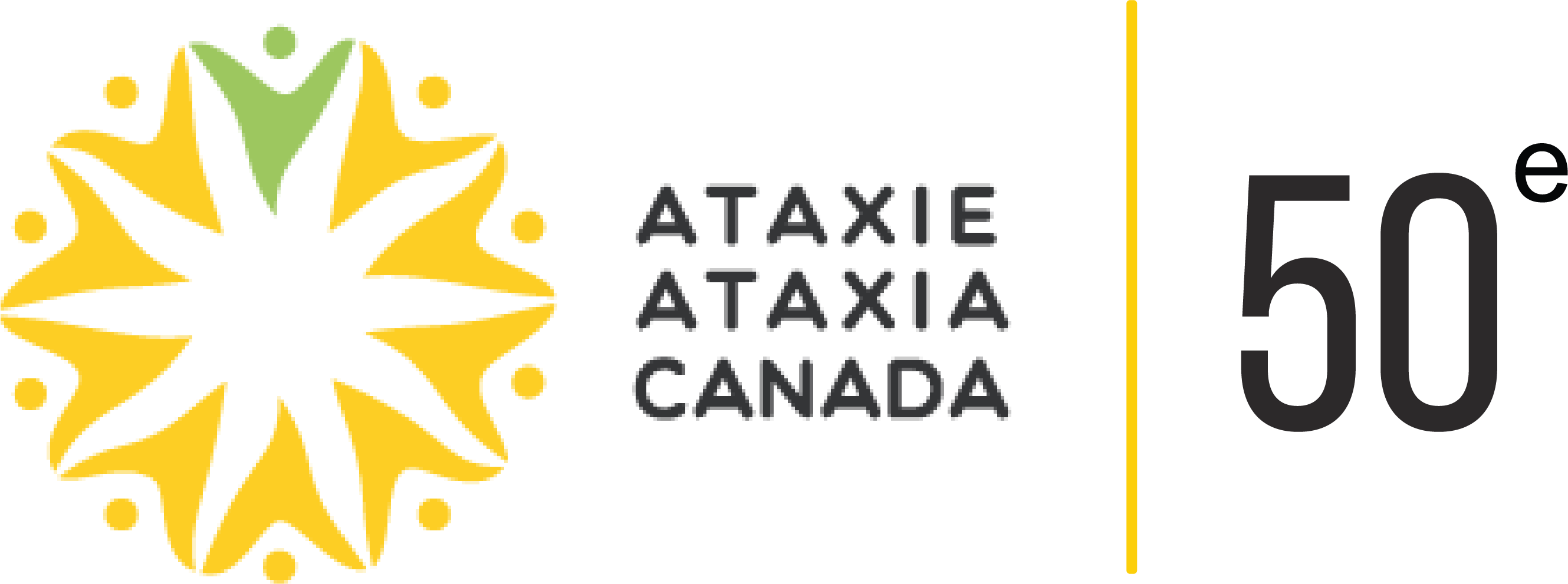With ataxia, the cerebellum no longer plays its role in the adjustment of the movements necessary for coordination, contraction and decontraction of the muscles. It no longer permits to accomplish the automatisms learned in our young years, for example walking.
This is why, with ataxia, we meet problems on the level of balance, posture, the voluntary and automatic movements and we observe a deficit in control and adjustment of posture as well as in the movements necessary for respiration, chewing, swallowing, the voice, the articulation of speech and writing.
We cannot cure these problems linked to ataxia, but we can treat the symptoms which follow from it.
Treatments by speech therapists and physiotherapists are offered by health professionals who will intervene with persons afflicted with cerebellar troubles by accompanying them in doing exercises especially conceived for their respective needs.
The regular practice of these exercises will have as its goal to maintain their knowledge and to improve certain functions. The efficiency of the treatments will depend, among others, on their frequency, the motivation of the beneficiaries, their physical ability and the seriousness of the affliction.
The treatments are lengthened on the long run. The exercises program is based on regular repetition of the exercises to further the learning.
The persons treating them guide the beneficiaries all along their performance. They explain, counsel, encourage, correct and plan the contents of each session depending on the evolution of the ataxia and the results. They also prepare the program of exercises at home.
The goal of these professionals is to diminish their efforts and bad habits and to procure a better quality of life. The beneficiaries will know their state better and be able to adjust themselves.
These two treatments complement each other very well and ataxics have nothing to lose and everything to gain by benefiting from them.
The role of the speech therapist:
- Improvement in the movements of respiration
- Mastering of the mechanism of swallowing
- Control of articulation
- Control of the rate of language (speed)
- Control of the voice (tone)
- Control of the gestures of the hands accompanying language
- Mastering the movements of writing
The role of the physical therapist:
- Strengthening, stretching, softening the muscles
- Improvement of posture in all positions
- Improvement in the pattern of walking
with the goal of:
- Diminishing back pains, spasms, muscular retractions
- Preventing deformations of the bones
- Making travelling easier
- In short, improving all the motor system, therefore the whole physical stat
Occupational Therapy (for daily autonomy)
Because of the evolution of ataxia, the person will sustain a loss of the ability to execute daily tasks, such as to dress himself, to wash himself, to prepare his meals or to participate in recreations and pastimes.
Occupational therapists, who are health professionals, can help ataxic persons to keep an autonomous way of life. They analyze their level of autonomy, their skills to carry out their occupations, evaluate their life environment, take note of the tasks which the person must accomplish daily, his habits, the presence of physical help, the milieu in which he lives and the accessibility of the place.
Occupational therapists work to discover solutions to functional problems. They help these persons to live in their lodging or residence, to perform daily tasks, to go about, to work and to enjoy receiving personal care. The beneficiary is perceived as a global being with needs, tastes and habits which are susceptible of changing. One must never forget, however, that autonomy must come first because autonomy is a liberty.
A few of the interventions of the occupational therapist:
- Suggest changes in the residence to make it more accessible and safe (eliminate architectural barriers)
- Find solutions to save on the expense of energy in the execution of daily tasks, in a way that what is left to them is sufficient to do other things
- Recommend the use or the replacement of an apparatus which is more advantageous for movement and autonomy
- Obtain information by means of questionnaires, interviews, and concretely set it up
- Guide the person toward the identification of difficulties
- Research support services
